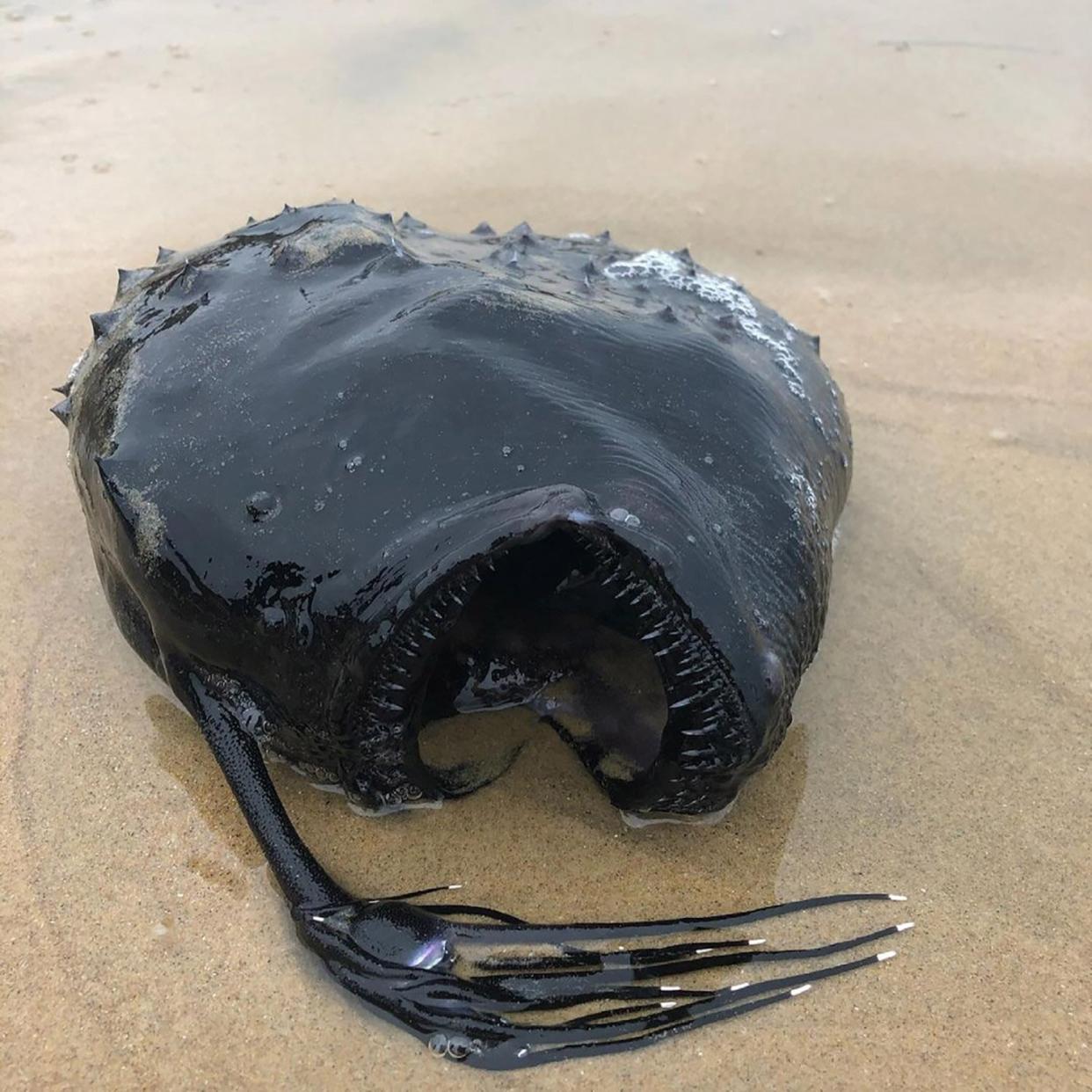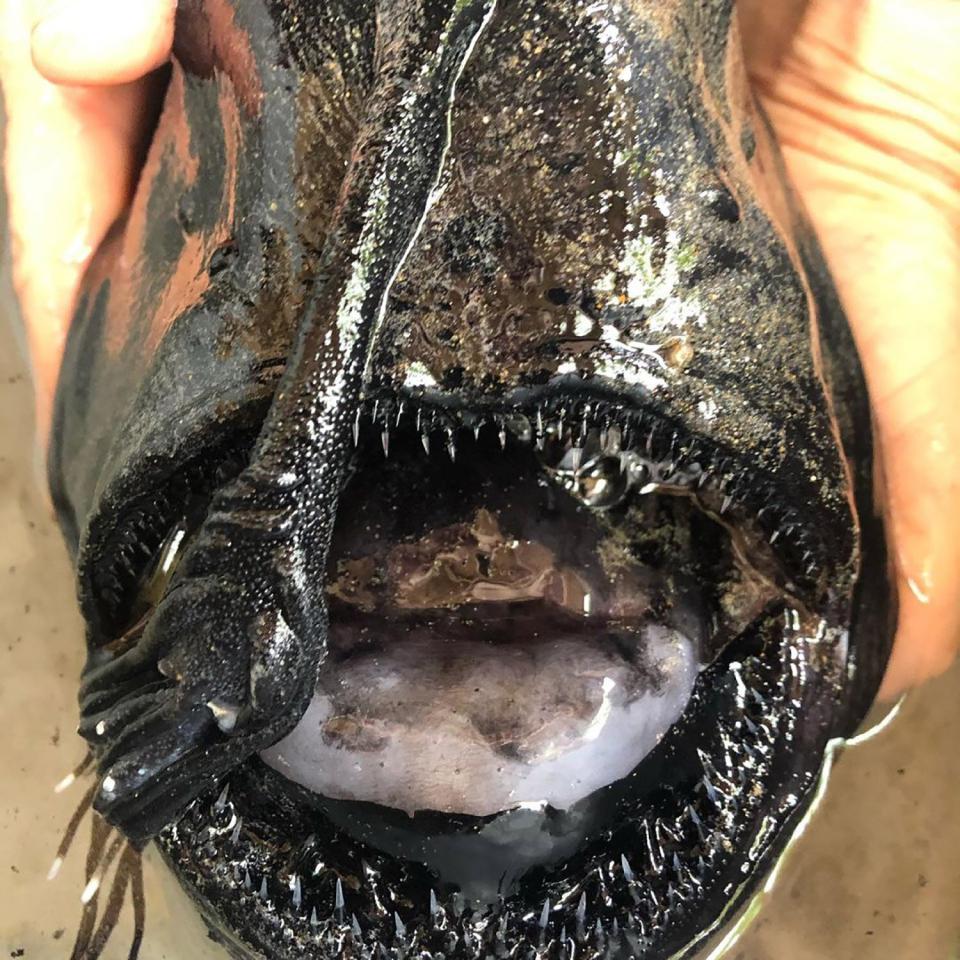Rarely Spotted Deep Sea Pacific Football Fish Washes Ashore in Crystal Cove, Calif.

Crystal Cove state park
A deep sea angler fish washed ashore in Crystal Cove, California, on Friday.
In an Instagram post, Crystal Cove State Park said the 18-inch fish, which is believed to be a Pacific Football Fish, was discovered in the park's marine protected area.
"To see an actual angler fish intact is very rare and it is unknown how or why the fish ended up on the shore," the park captioned several photos of the fish. "Seeing this strange and fascinating fish is a testament to the diversity of marine life lurking below the water's surface in California's MPAs and as scientists continue to learn more about these deep sea creatures it's important to reflect on how much is still to be learned from our wonderful ocean 🌊"
There are over 200 species of angler fish, according to Crystal Cove State Park. These fish regularly swim as deep as 3,000 feet in the ocean.

Crystal Cove state park

Crystal Cove state park
RELATED: 240-lb. 'River Monster' Fish Caught in Detroit 'Has Been Roaming Our Waters Over 100 Years'
The fish discovered Friday is known to be a female, because only female angler fish possess a long stalk on their head with a bioluminescent tip, which is used to lure prey in the darkness.
Angler fish also have razor sharp teeth like "pointed shards of glass" and their mouths are large enough that they can swallow prey as big as their own bodies.
Never miss a story — sign up for PEOPLE's free daily newsletter to stay up-to-date on the best of what PEOPLE has to offer, from juicy celebrity news to compelling human interest stories.
Females are known to grow up to 24 inches long, but male angler fish usually only grow to be about an inch long because "their sole purpose is to find a female and help her reproduce," according to the state park.
"Males latch onto the female with their teeth and become 'sexual parasites,' eventually coalescing with the female until nothing is left of their form but their testes for reproduction. Wild!" the caption reads.
It's not clear where the fish will end up, but it is likely it will go to an educational institution or museum. Currently, it's in the custody of the California Department of Fish & Wildlife.

